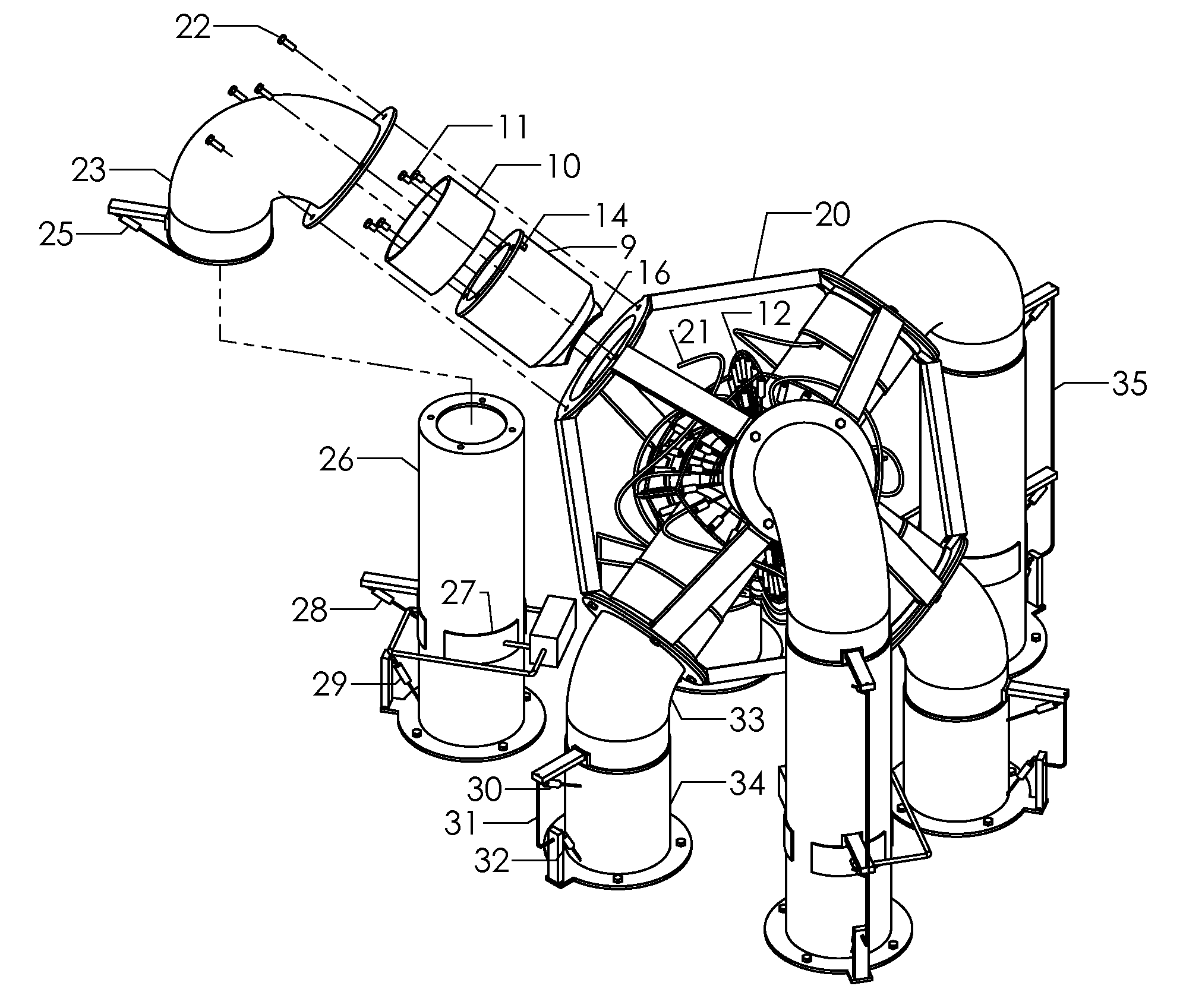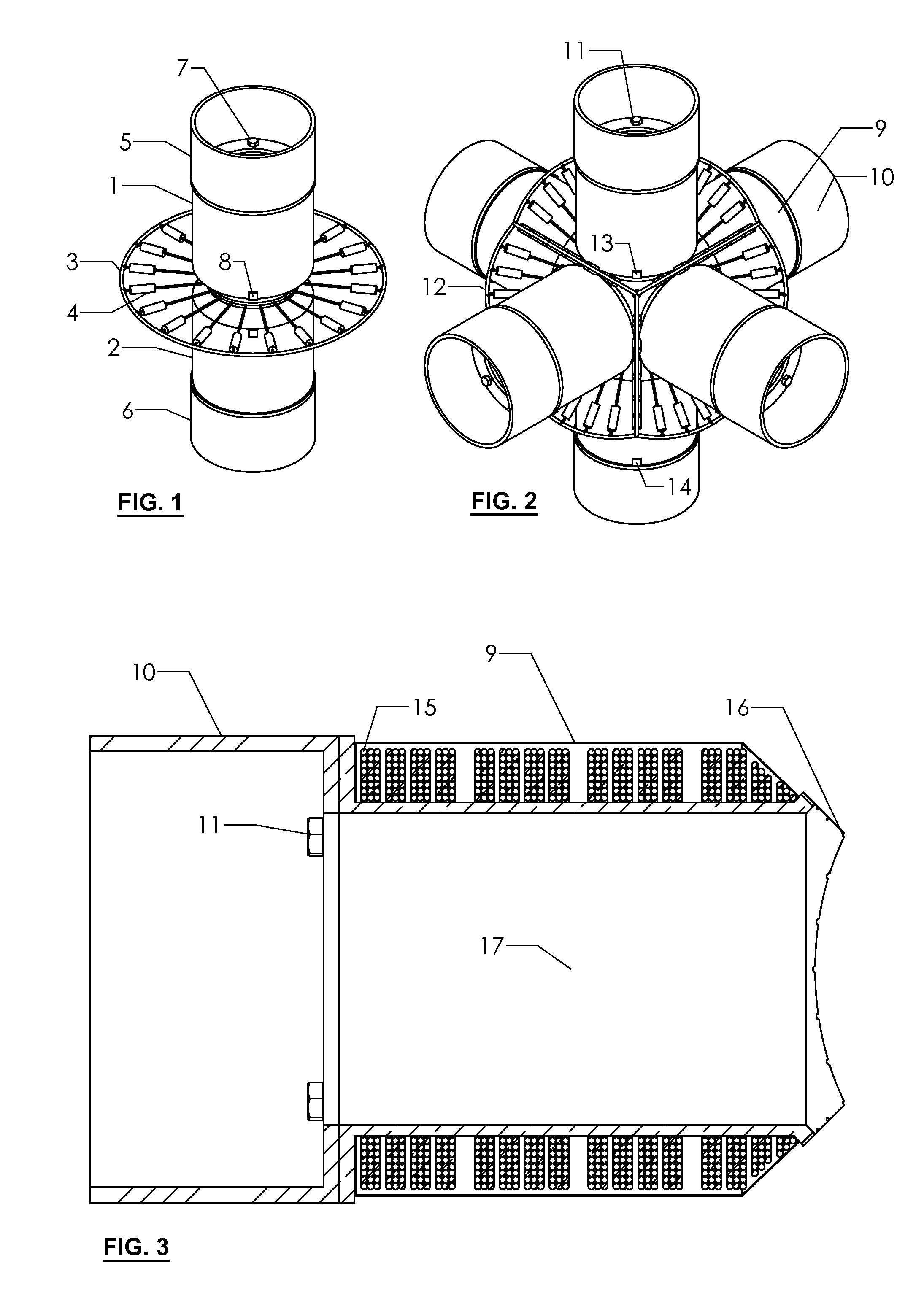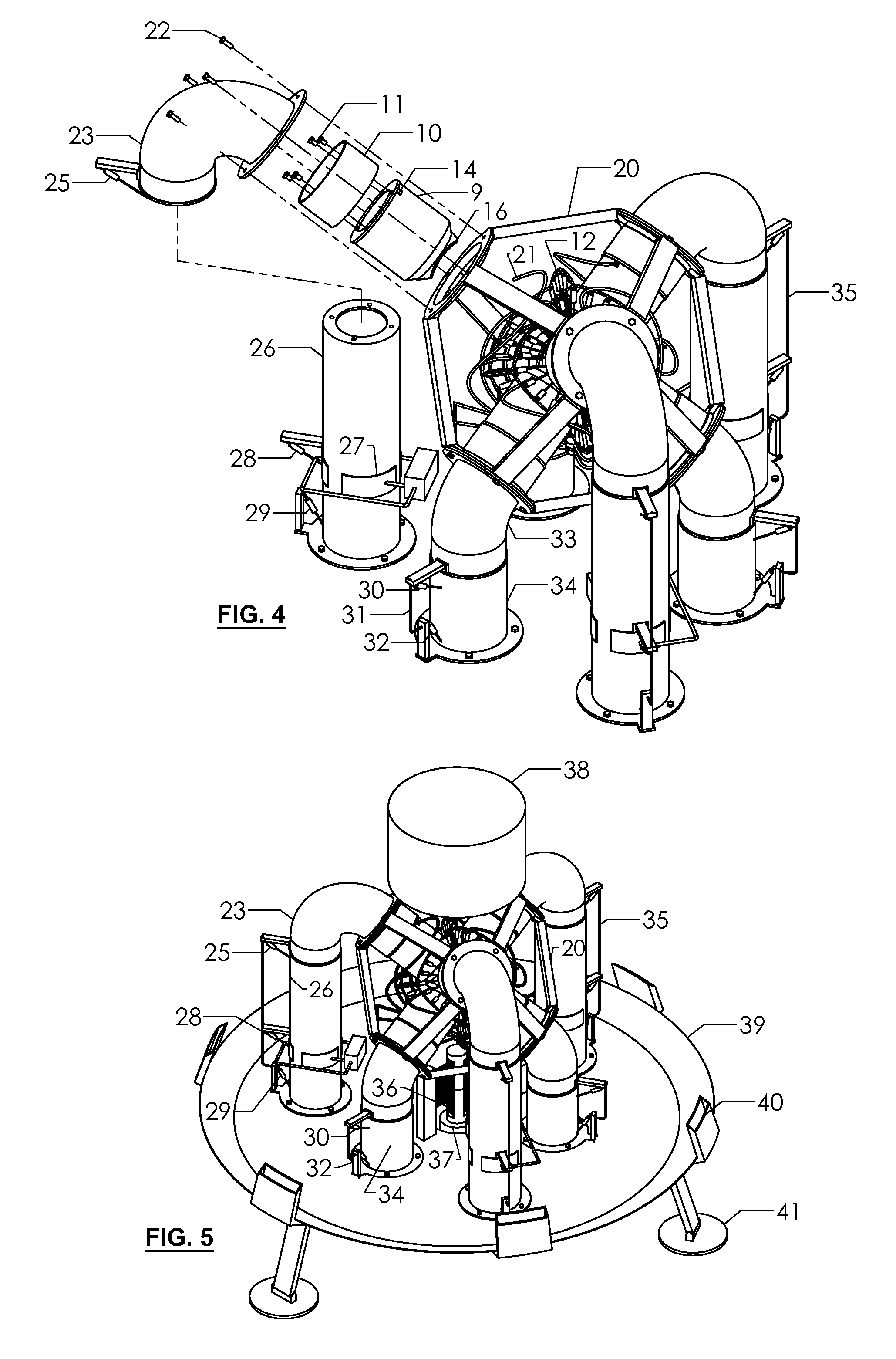Magnetic and electrostatic nuclear fusion reactor
- Summary
- Abstract
- Description
- Claims
- Application Information
AI Technical Summary
Benefits of technology
Problems solved by technology
Method used
Image
Examples
embodiment
Preferred Embodiment
[0049]A preferred embodiment, comprised by six magnets, is shown in FIG. 2, however, for a better understanding, a basic embodiment, comprised by two magnets, is shown in FIG. 1, in where is illustrated a magnet 1 and a magnet 2 joined forming an angle of 180° between each other, and a circular ion injector belt 3 with the output of its ion injectors 4 between the intersection (region of magnetic cusps). The circular injector belt 3 is comprised by twenty ion injector 4 disposed concentrically and equally spaced around the intersection of the magnets. An electrical insulator 5 is attached to magnet 1 and an electrical insulator 6 is attached to magnet 2, both by four bolts each one (see bolt 7).
[0050]The ideal structure is illustrated in FIG. 2 in where there are six magnets, each one similar to magnet 9, joined forming angles of 90° at adjacencies, and an arc-shaped injector belt 12 with the output of its ion injector between the intersections (region of magneti...
PUM
 Login to View More
Login to View More Abstract
Description
Claims
Application Information
 Login to View More
Login to View More - R&D
- Intellectual Property
- Life Sciences
- Materials
- Tech Scout
- Unparalleled Data Quality
- Higher Quality Content
- 60% Fewer Hallucinations
Browse by: Latest US Patents, China's latest patents, Technical Efficacy Thesaurus, Application Domain, Technology Topic, Popular Technical Reports.
© 2025 PatSnap. All rights reserved.Legal|Privacy policy|Modern Slavery Act Transparency Statement|Sitemap|About US| Contact US: help@patsnap.com



